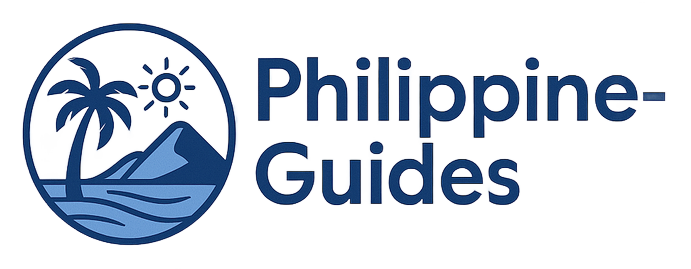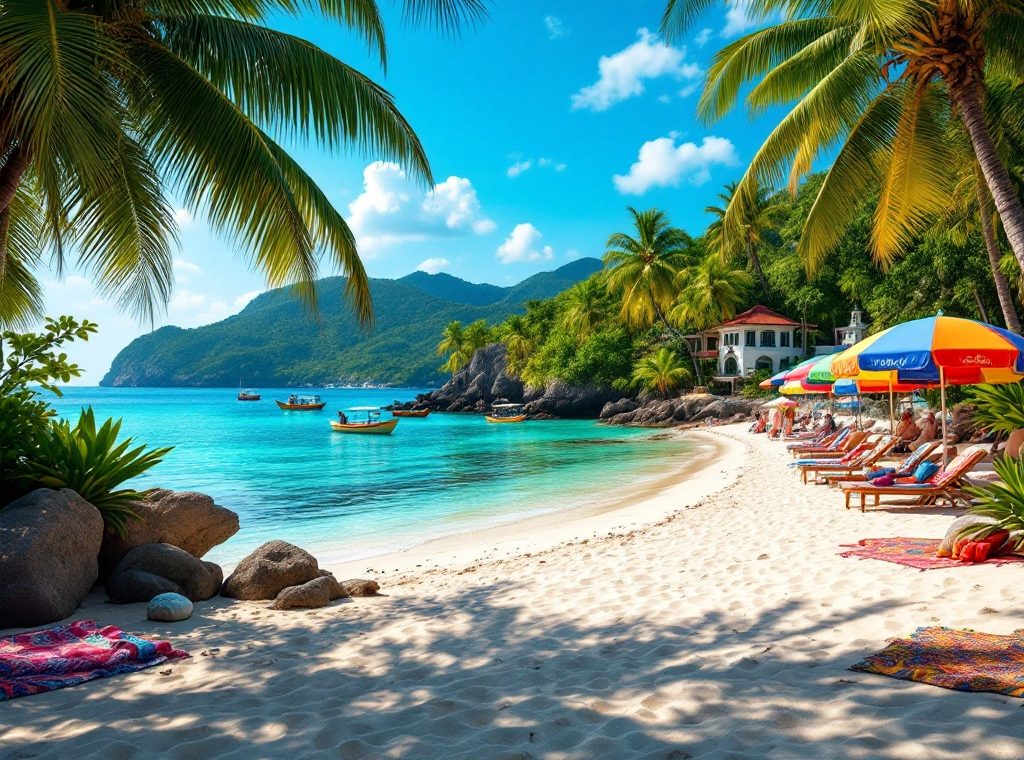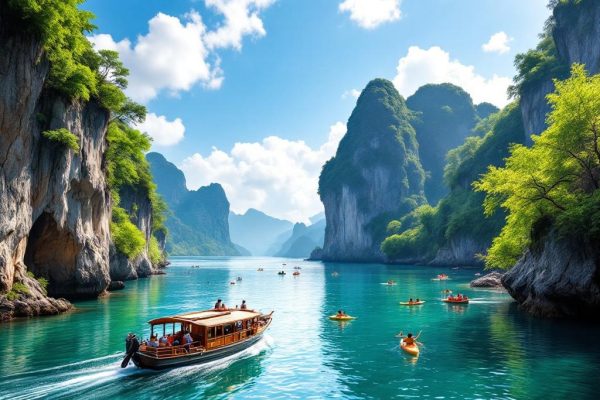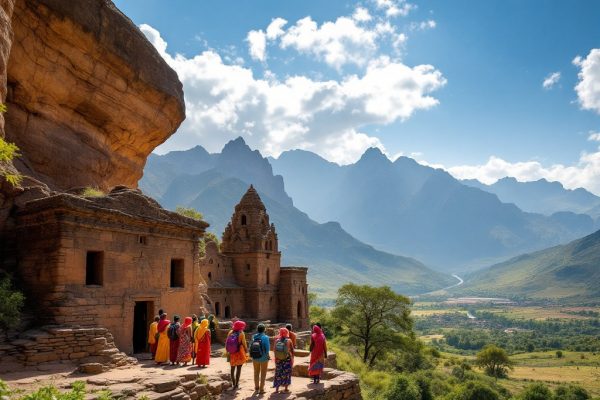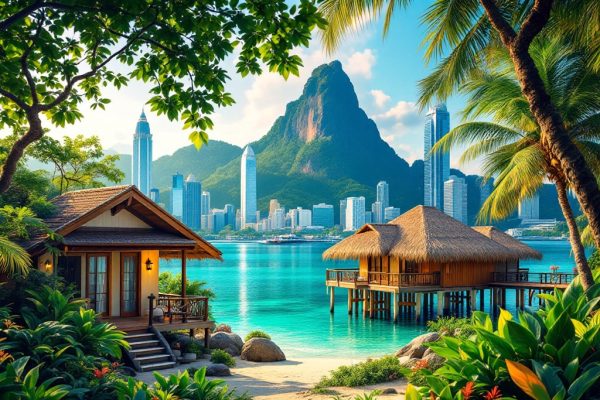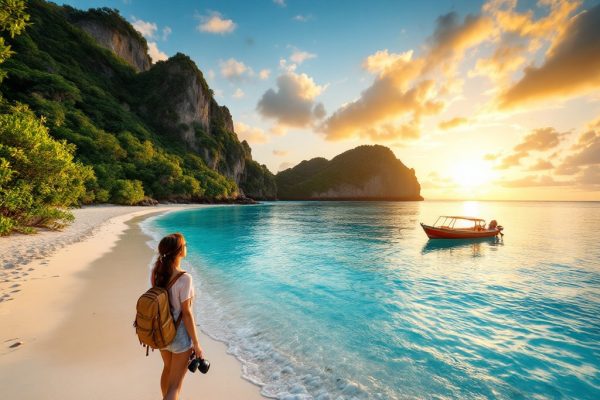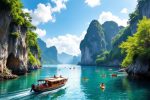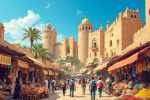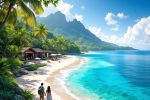How to Plan a Perfect Trip to the Philippines without Travel Coordinator
Dreaming of exploring over 7,000 breathtaking islands? The Philippines offers pristine beaches, vibrant coral reefs, and lush rainforests, perfect for adventurers and relaxation seekers alike. Discover unique cultural experiences, from Spanish colonial cities to indigenous villages. Plan your ideal trip with our comprehensive guide, covering everything from budget-friendly itineraries to essential travel tips. Start your Philippine adventure today!
Important information

- The Philippines has over 7,000 islands, offering diverse experiences from beaches and rainforests to volcanoes and cultural heritage.
- English is widely spoken, making communication easy for tourists.
- Carry Philippine Pesos (PHP), especially for smaller businesses. Credit cards are accepted in larger establishments. Use authorized money changers or banks for best exchange rates.
- Dry season (November-April) is ideal for visiting, but the wet season (June-November) offers fewer crowds and better deals. Book flights and ferries in advance.
- Pack light clothing, water shoes, and mosquito repellent.
Understanding the Philippines and Its Attractions
Discover the Philippines, a breathtaking archipelago of over 7,000 islands, offering a diverse range of experiences. Picture yourself unwinding on pristine beaches, exploring vibrant coral reefs, or venturing through lush rainforests and volcanic landscapes. Each island presents a unique adventure waiting to be unveiled. Beyond its natural wonders, the Philippines boasts a rich cultural heritage. Explore historic Spanish colonial cities, immerse yourself in the traditions of indigenous villages, and witness the vibrancy of colorful festivals. For the adventurous souls, diving, snorkeling, hiking, surfing, and exploring the renowned rice terraces are just a few of the thrilling activities that await. Whether you seek adventure, relaxation, or cultural immersion, the Philippines has something to captivate every traveler.
The Appeal of Over 7,000 Islands
Discover the Philippines, a breathtaking archipelago of over 7,000 islands, each offering a unique adventure. From pristine beaches and lush rainforests to active volcanoes, the diverse landscapes attract tourists from across the globe.
Explore Palawan
Journey through the magnificent Puerto Princesa Subterranean River, a UNESCO World Heritage site. Discover hidden lagoons and marvel at the unique rock formations.
Relax in Boracay
Unwind on the world-famous White Beach, known for its powdery sand and crystal-clear waters. Indulge in water sports or simply soak up the sun.
Dive into Cebu
Explore Cebu’s rich history, visiting ancient forts and immersing yourself in the local culture. Experience world-class diving and swimming with whale sharks.
Something for Everyone
The Philippines offers diverse experiences for every traveler, from adventure seekers to those seeking relaxation and cultural immersion.
Navigating the English-speaking Population
The Philippines’ widespread use of English makes communication easy for tourists, simplifying tasks like ordering food or asking for directions. English is everywhere, appearing on signs, in transportation systems, and at tourist destinations, making the country very welcoming to English speakers.
Safe Travel and Local Currency Considerations
Traveling smart in the Philippines involves blending common sense with local knowledge. While generally safe for tourists, protect your belongings and stay aware of your surroundings, as petty theft can occur. Carrying Philippine Pesos (PHP) is crucial, especially for smaller businesses and local transportation. Larger establishments, like hotels, restaurants, and city-based shopping malls, readily accept credit cards. For the best exchange rates, use authorized money changers or banks upon arrival. Airport kiosks tend to offer less favorable deals. ATMs are widely available, but be mindful of potential withdrawal limits and fees. Finally, inform your bank of your travel dates to ensure smooth card usage abroad.
Money Matters
- Carry Philippine Pesos (PHP), especially for smaller businesses and local transportation.
- Larger establishments accept credit cards.
- Use authorized money changers or banks for the best exchange rates.
- Be mindful of ATM withdrawal limits and fees.
- Inform your bank of your travel dates.
Safety and Awareness
- Stay aware of your surroundings.
- Protect your belongings from petty theft.
Itinerary and Budget Planning
The Philippines boasts a tropical climate. The dry season, spanning from December to May, is ideal for tourists. However, budget-conscious travelers can find fewer crowds and better deals during the wet season, from June to November.
Looking for affordable travel? The Philippines offers a range of accommodations, from budget-friendly hostels to luxurious resorts. Food is also inexpensive, especially at local eateries. Transportation, including ferries and buses, is budget-friendly as well.
For efficient travel, plan a circular itinerary to minimize backtracking. This ensures a smooth journey between destinations. For example, start in Manila and explore a loop through Luzon, the Visayas, or Mindanao.
Seasonal Travel Tips and the Best Time to Visit
The best time to explore the Philippines is during the dry season, from November to April. Expect sunny days and clear skies, ideal for island hopping. Be aware that this popular period attracts larger crowds.
If you prefer a more tranquil experience, consider visiting in May or October. These shoulder months offer pleasant weather with fewer tourists. The rainy season, spanning June to October, brings the possibility of typhoons and heavy rainfall, which could disrupt travel plans.
Crafting a Travel Budget for Low Prices
Plan your dream Philippine trip on a budget by focusing on five key areas: flights, accommodation, food, activities, and transportation. Research average costs to create a realistic budget. Consider hostels or budget hotels for affordable lodging. Utilize local buses and ferries for cost-effective travel within the Philippines. Explore local cuisine through street food and markets to save on meals. Take advantage of free activities like hiking, swimming, and enjoying the beaches. Add a buffer to your budget for unexpected expenses.
Travel in a Circle: Efficient Itinerary Planning
Planning a circle trip in the Philippines is a great way to save time and explore multiple islands without backtracking. Start by selecting a central location, such as Manila. Then, choose destinations that create a circular route. For example, you could fly from Manila to Cebu, then to Bohol, followed by Dumaguete, and finally back to Manila. Visualizing your route on a map can help you create a practical and efficient itinerary.
Choosing Island Destinations and Activities
Bohol’s iconic Chocolate Hills are a must-see. Don’t miss the incredible diving and snorkeling around Panglao Island, teeming with vibrant marine life.
For kayaking adventures, El Nido in Palawan is a paradise. Island hopping in Bacuit Bay reveals stunning limestone cliffs and hidden lagoons.
Coron, also in Palawan, offers world-renowned wreck diving and the breathtaking Kayangan Lake.
Surfers flock to Siargao Island for the legendary Cloud 9 wave. Venture off the beaten path to discover pristine beaches and unique experiences on less-visited islands like Malapascua and Camiguin – true hidden gems of the Philippines.
Exploring Bohol and Panglao
Bohol and Panglao Island offer a variety of adventures. The Chocolate Hills, a geological formation of over 1,000 symmetrical mounds, are a must-see. Panglao Island, easily accessible by bridge, is home to stunning beaches like Alona Beach, known for its pristine sands and clear waters. Visitors can dive vibrant coral reefs or snorkel. Explore the captivating Hinagdanan Cave for a truly memorable experience.
Discovering the Beauty of El Nido
El Nido, Palawan, is renowned for its stunning limestone cliffs, hidden lagoons, and thriving marine ecosystems. Nacpan and Las Cabanas beaches entice visitors with pristine sands, perfect for leisurely strolls. Kayaking offers a unique way to explore hidden gems like the Small and Big Lagoons, as well as the aptly named Secret Lagoon. Divers and snorkelers will be captivated by the vibrant coral reefs and diverse fish species surrounding Helicopter and Dilumacad Islands. These islands promise unforgettable underwater adventures.
Discover El Nido’s Beaches
Nacpan Beach: stroll along pristine sands, perfect for leisurely walks.
Las Cabanas Beach: relax on the beautiful sands and soak up the sun.
Explore El Nido’s Lagoons by Kayak
Small Lagoon: discover hidden gems by kayak.
Big Lagoon: explore this expansive lagoon’s unique ecosystem.
Secret Lagoon: uncover the mysteries of this secluded spot.
Dive into El Nido’s Underwater World
Helicopter Island: dive and snorkel amongst vibrant coral reefs and diverse fish species.
Dilumacad Island: discover unforgettable underwater adventures.
Recommended Island Hopping Adventures
Tour A: Beach Lover’s Paradise
Discover hidden lagoons like the Small and Big Lagoons, relax on the sandy shores of Shimizu Island, and enjoy the beautiful 7 Commando Beach.
Tour B: History Buff’s Delight
Explore ancient caves and shrines on Pinagbuyutan and Entalula Islands, marvel at the unique Snake Island, and uncover the secrets of the mysterious Cudugnon Cave.
Tour C: Snorkeler’s Dream
Swim with vibrant fish at Helicopter Island, find serenity at the Matinloc Shrine, and discover the secluded Secret and Hidden Beaches.
Tour D: Ultimate Relaxation
Experience the calm waters of Cadlao Lagoon and bask on the sun-drenched sands of Paradise, Pasandigan, and Natnat Beaches.
Off the Beaten Path and Unspoiled Tourism
Dreaming of an unforgettable Philippine getaway? Explore the wonders of Bucas Grande, Siargao, or Coron. These islands offer pristine beaches, untouched nature, and authentic local experiences. Swim with stingless jellyfish in Bucas Grande’s enchanting Sohoton Cove. Experience the surfer’s paradise of Siargao, renowned for its incredible marine biodiversity. Dive into Coron’s stunning lagoons and explore historic World War II wrecks. Seeking seclusion? Discover the Philippines’ hidden gems, often nestled near popular destinations, offering tranquility and unique charm.
Bucas Grande
Swim with stingless jellyfish in the enchanting Sohoton Cove.
Siargao
A surfer’s paradise with incredible marine biodiversity.
Coron
Explore stunning lagoons and historic World War II wrecks.
Hidden Gems
Discover tranquil, lesser-known islands near popular destinations.
Transportation and Travel Hacks
Getting around the Philippine islands often involves a mix of ferries, buses, and other transport. While independent travel can be budget-friendly, it requires careful planning of ferry schedules, bus routes, and factoring in potential delays. Local travel agencies can simplify travel by booking combined tickets.
Luzon
Hiring a car and driver is a convenient and flexible option for exploring Luzon, especially for families or groups. It provides door-to-door service. Remember to negotiate the price beforehand, including fuel and tolls.
Visayas
Ferries are the main way to travel between islands in the Visayas. Numerous companies offer various levels of comfort and speed. Booking tickets in advance is highly recommended, especially during peak season. Be prepared for possible weather-related delays.
Scooters offer a cheap and independent way to explore the islands, but ensure you have the necessary license and experience. Always prioritize safety by wearing a helmet. Be aware that traffic can be challenging in certain areas.
Complicated Transfers and DIY Tours
Island hopping in the Philippines relies heavily on ferries, but their schedules and routes can be confusing. Planning is key to a smooth trip. Independent travel offers greater flexibility but requires more preparation. Thorough research is essential.
Travel Hacks for Luzon: Hiring a Private Vehicle
Experience the freedom of exploring Luzon with a private vehicle rental. Discover hidden gems and travel at your own pace, venturing beyond the reach of public transport. Select the perfect vehicle for your needs, choosing from cars, vans, and SUVs. Enhance your journey by hiring a local driver, ensuring seamless navigation throughout Luzon. This personalized travel solution offers unparalleled convenience and efficiency, perfect for families and groups.
Transportation Options: Ferries in the Visayas
Ferries are the lifeblood of the Visayas, connecting its many islands and facilitating travel for both locals and tourists. This convenient mode of transport makes exploring the archipelago easy, allowing visitors to hop aboard and discover its wonders.
Learning to Ride a Scooter
Riding a scooter in the Philippines offers convenient access to various destinations across the islands. Therefore, mastering this skill is highly recommended.
Cultural Exploration
Experience the rich culture of the Philippines, a country known for vibrant festivals like Ati-Atihan and Pahiyas. Explore local markets to witness daily life and discover unique crafts. Foodies can indulge in traditional dishes such as adobo, sinigang, and lechon.
Manila’s Cultural Gems
Manila, the nation’s capital, offers key cultural attractions.
- Start at the National Museum Complex for a comprehensive overview of Philippine art, history, and nature.
- Explore Filipino history and culture at the Ayala Museum.
- Immerse yourself in traditional dance or theater at the Cultural Center of the Philippines.
Enrich Your Understanding
These encounters provide valuable insights into Filipino heritage.
Embracing Local Culture
Immerse yourself in Filipino culture by savoring the local cuisine and experiencing the vibrant festivals. Showing respect for local customs is crucial to understanding the Filipino way of life. For a truly immersive journey, explore local markets, join community tours, or volunteer for a local project. Learning some Tagalog phrases and demonstrating respect for traditions will deepen your connection with the people. Cultural sensitivity is paramount; dress modestly at religious sites and always ask permission before taking photos. Engaging with the community creates richer travel experiences and fosters meaningful bonds with Filipinos. Here’s how to enhance your cultural immersion:
Savor local cuisine and experience vibrant festivals. Try traditional dishes like adobo, sinigang, and lechon, and participate in colorful celebrations like Sinulog and Ati-Atihan.
Show respect for local customs. This is key to understanding the Filipino way of life.
Explore local markets, join community tours, or volunteer. These activities offer immersive experiences and opportunities to connect with locals.
Learn basic Tagalog phrases. Simple greetings like “Magandang araw” (Good day) and “Salamat” (Thank you) go a long way in showing respect.
Practice cultural sensitivity. Dress modestly when visiting religious sites and always ask permission before taking photos of people.
Historical Places and Cultural Insights
Explore Manila’s Intramuros, a walled city echoing the Spanish colonial era. Discover Fort Santiago, a crucial citadel in Philippine history. Visit San Agustin Church, the nation’s oldest stone church.Beyond Intramuros, Rizal Park features the Rizal Monument, dedicated to national hero Dr. Jose Rizal. Nearby, explore the meticulously preserved Casa Manila. Delve into Philippine culture at the National Museum Complex, comprising three key institutions: the National Museum of Fine Arts, the National Museum of Anthropology, and the National Museum of Natural History.
Practical Travel Tips
Secure your flight and ferry tickets in advance, especially during peak season, to guarantee your spot.
Having Philippine pesos on hand is essential, and some US currency can also be helpful.
Internet connectivity can be unreliable, so consider getting a local SIM card.
Pack light clothing, but bring essential items like water shoes for exploring beaches and reefs, and mosquito repellent.
Booking Ahead: Flights and Ferries
To snag the best deals and secure your travel, book flights and ferries in advance, especially during peak season. Comparing prices online is a good starting point, but checking directly with airlines and ferry companies can often uncover even lower fares.
Keeping Cash and Pesos at Hand
Cash is essential in the Philippines. Many small businesses and local vendors primarily operate on a cash basis and may not accept cards, so ensure you have enough Philippine Pesos (PHP) on hand.
ATMs are widely accessible in cities and larger towns, making it easy to withdraw Pesos. Carrying smaller denominations is recommended for everyday transactions.
Internet Access and Staying Connected
Staying connected in the Philippines is generally straightforward. Cities and tourist hubs offer easy access to local SIM cards with data plans from popular providers like Globe and Smart. Free Wi-Fi is also common in many cafes and restaurants. However, remote areas may require a different approach. Consider a portable Wi-Fi device for these locations. Downloading offline maps and apps before your trip is always recommended to ensure you stay connected even without internet access.
Staying Connected in the Philippines
Connecting in the Philippines is generally easy. In cities and tourist areas, you can easily find local SIM cards with data plans from providers like Globe and Smart. Many cafes and restaurants offer free Wi-Fi.
Tips for Remote Areas
For remote areas, consider a portable Wi-Fi device. Download offline maps and apps before your trip to ensure you stay connected even without internet access.
Essential Gear: Water Shoes and Mosquito Repellent
Pack water shoes for exploring rocky beaches and coral reefs, they are essential for safe exploration.
Protecting yourself from mosquito-borne illnesses requires mosquito repellent, so bring that too.
